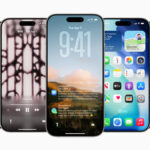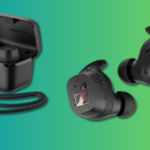The USB-C Conundrum: Understanding Cables and Chargers
When USB-C made its debut, it sparked hopes of a single, all-encompassing connector that could handle a range of devices. However, the experience has proven to be quite frustrating. While various gadgets—from laptops and tablets to smartphones—may share the same cable or charger, the performance can significantly differ based on the specific cable or charger involved. The reasons behind these discrepancies can often be perplexing.
This confusion arises from two primary issues. First, there are cables that meet different USB standards without clear labeling to indicate their compliance. Secondly, charging bricks vary in their power output. While they typically feature at least some form of labeling, the meanings can often be ambiguous.
Chances are, you’ve faced this dilemma without even noticing it. For instance, one individual owned a portable external monitor that only operated with a particular USB-C cable she affectionately labeled as the “magic cable.” This label stemmed from her inability to understand why other cables failed to work, despite being functional for charging phones or connecting accessories.
If this scenario resonates, it’s essential to grasp what makes certain cables uniquely effective.
Understanding the Variability of USB-C Cables
To illustrate the challenge at hand, consider what comes to mind when you hear “USB-C.” You probably envision a compact, oval-shaped connector. However, that’s just the start. The term “USB-C” exclusively refers to the type of port and connector design.
The associated USB standards serve to define necessary data transfer rates and the power delivered. This can become intricate, but the key takeaways are the Power Delivery ratings of a cable or charger.
Power Delivery (often abbreviated to USB-PD) is a component of the USB standards designed to allow cables to deliver sufficient power to charge devices. The term “sufficient” is quite subjective. Every USB port offers at least some power—which is why devices like keyboards or mice activate upon connection—but higher-powered devices such as smartphones and tablets have much greater energy needs.
The Importance of Matching Chargers and Devices
The Power Delivery feature was introduced in USB standards so that manufacturers can’t simply claim how much power a charger can provide without substantiation. This capacity is typically represented in watts (W). For instance, a laptop might use a 100W power adapter, while a smartphone may require only a 20W charger for optimal charging speed.
Fast charging complicates matters further. If a lower-wattage charger is connected to a high-demand device, charging will still occur, albeit at a snail’s pace. A 5W charger may power your phone overnight, while a 20W charger could fully charge it within an hour or two.
In cases involving laptops or tablets, the energy required during operation can surpass what a slow-charging cable can deliver. This is why specialized cables are necessary for devices like my friend’s portable monitor. The monitor needs a substantial amount of power for its vibrant display, and the other cables she tried likely lacked the capacity, designed instead for simpler tasks such as charging a pair of headphones.
When utilizing a charging block, that component is crucial too. Not all blocks connected to wall outlets provide maximum power to every connected cable. Some multi-outlet blocks allocate different power levels to various ports.
Ensuring that every link in the charging chain is capable of delivering adequate power is essential. While the power outlet ideally meets expectations, the charging block, the cable, and the device must all be equipped to handle the required power.
How to Select the Appropriate Charging Cable
The most irritating aspect of this entire situation is the confusion caused by USB specifications and manufacturers’ attempts to market their products. For context, cables capable of transferring up to 5Gbps have been variously labeled over the past decade as USB 3.0, USB 3.1 Gen 1, and even USB 3.2 Gen 1, all indicating essentially the same category of performance.
Therefore, focus on these two key elements to determine the right cable:
- Original Charger: If a charger or cable came bundled with your device, it’s typically the one that will deliver the fastest charging speed possible. Slower cables will cause the device to adjust its charging pace, while faster chargers won’t accelerate the process beyond what the device is designed to handle.
- Charger Wattage: For third-party options, many manufacturers specify the maximum wattage of their chargers, generally more common with charging blocks than cables. Generally, a higher wattage is preferable. While a smartphone doesn’t need a 100W charger, a laptop likely does. Remember, your devices will default to the least powerful component in the charging setup.
Sometimes chargers feature labels detailing their power output, such as “100W.” If not, research its model online. Additionally, if there’s no labeling on the cable but you know which device it came with, checking the specifications for that particular product can provide insight. For instance, if your smartphone requires a 20W charger for fast charging, any cables included with it should support at least that capacity.
Potential Risks of Using an Incorrect Charger
Fortunately, in most situations, using a misclassified charger won’t cause damage to your devices. A 100W charger can still effectively charge your smartphone without utilizing its entire power capacity. Even a lower-wattage charger will still provide some energy; the only downside is a longer charging time. If you remember smartphones prior to the rise of “fast charging,” that’s precisely how they used to function.
The one notable downside occurs when a device demands more power than the charger can supply. This scenario is especially common with gaming laptops. Even robust 100W USB-C chargers may not deliver enough energy to meet the intense power requirements of high-end gaming, which is why these laptops often include a substantial charging brick.
Even then, the device is unlikely to incur damage but will rely on its battery to sustain activity. Consequently, it might drain the battery at a slower rate, as it attempts to draw power from both the power outlet and its battery simultaneously. However, if the demand exceeds capacity, it will eventually run out of power.
For peripherals—such as my friend’s monitor—that lack independent batteries, they simply won’t function. If a device requiring power via USB fails to turn on, it likely indicates that either the cable isn’t capable of delivering sufficient power or the connected device cannot provide enough energy to meet its needs.












